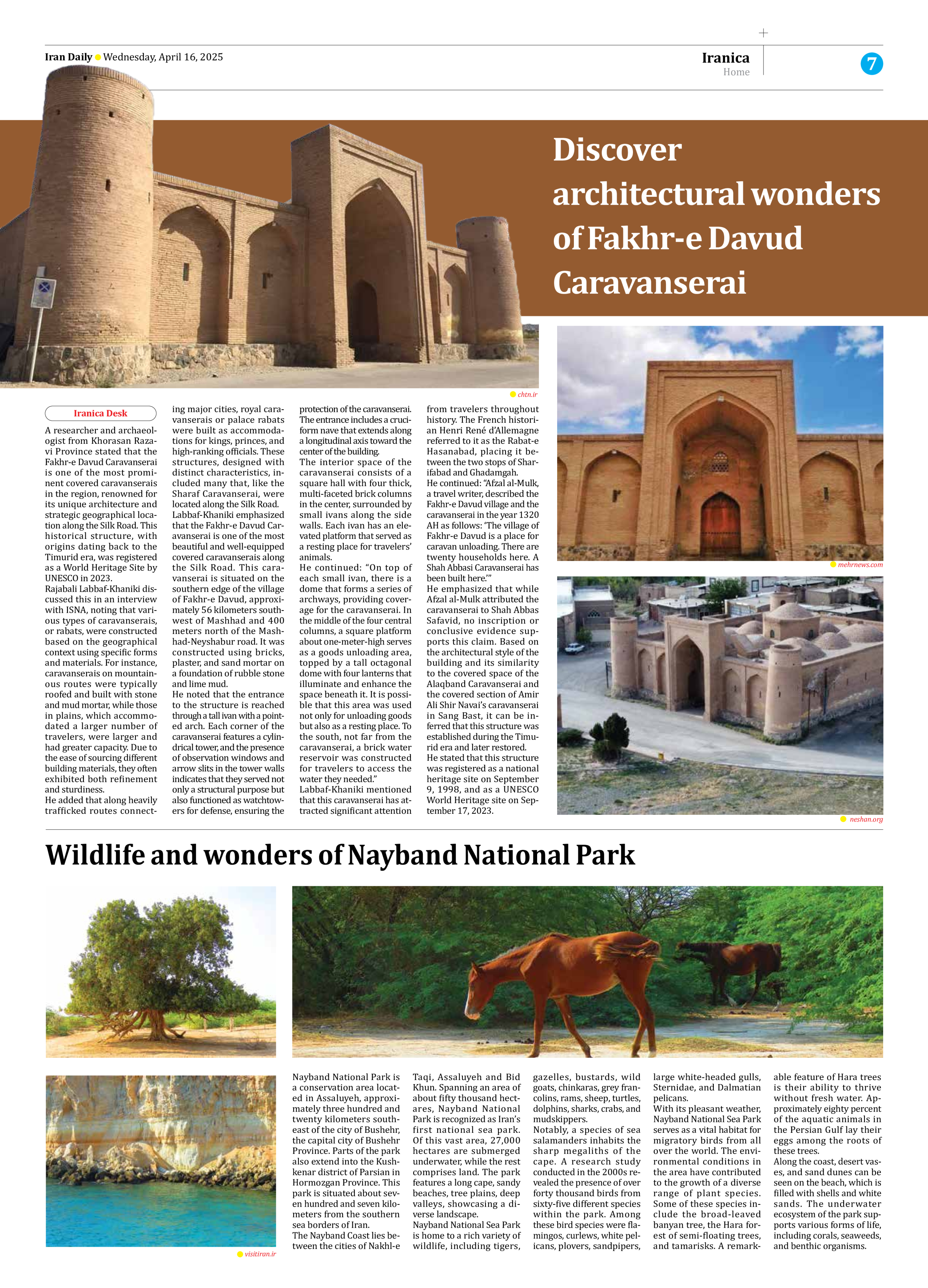
Discover architectural wonders of Fakhr-e Davud Caravanserai
A researcher and archaeologist from Khorasan Razavi Province stated that the Fakhr-e Davud Caravanserai is one of the most prominent covered caravanserais in the region, renowned for its unique architecture and strategic geographical location along the Silk Road. This historical structure, with origins dating back to the Timurid era, was registered as a World Heritage Site by UNESCO in 2023.
Rajabali Labbaf-Khaniki discussed this in an interview with ISNA, noting that various types of caravanserais, or rabats, were constructed based on the geographical context using specific forms and materials. For instance, caravanserais on mountainous routes were typically roofed and built with stone and mud mortar, while those in plains, which accommodated a larger number of travelers, were larger and had greater capacity. Due to the ease of sourcing different building materials, they often exhibited both refinement and sturdiness.
He added that along heavily trafficked routes connecting major cities, royal caravanserais or palace rabats were built as accommodations for kings, princes, and high-ranking officials. These structures, designed with distinct characteristics, included many that, like the Sharaf Caravanserai, were located along the Silk Road.
Labbaf-Khaniki emphasized that the Fakhr-e Davud Caravanserai is one of the most beautiful and well-equipped covered caravanserais along the Silk Road. This caravanserai is situated on the southern edge of the village of Fakhr-e Davud, approximately 56 kilometers southwest of Mashhad and 400 meters north of the Mashhad-Neyshabur road. It was constructed using bricks, plaster, and sand mortar on a foundation of rubble stone and lime mud.
He noted that the entrance to the structure is reached through a tall ivan with a pointed arch. Each corner of the caravanserai features a cylindrical tower, and the presence of observation windows and arrow slits in the tower walls indicates that they served not only a structural purpose but also functioned as watchtowers for defense, ensuring the protection of the caravanserai. The entrance includes a cruciform nave that extends along a longitudinal axis toward the center of the building.
The interior space of the caravanserai consists of a square hall with four thick, multi-faceted brick columns in the center, surrounded by small ivans along the side walls. Each ivan has an elevated platform that served as a resting place for travelers’ animals.
He continued: “On top of each small ivan, there is a dome that forms a series of archways, providing coverage for the caravanserai. In the middle of the four central columns, a square platform about one-meter-high serves as a goods unloading area, topped by a tall octagonal dome with four lanterns that illuminate and enhance the space beneath it. It is possible that this area was used not only for unloading goods but also as a resting place. To the south, not far from the caravanserai, a brick water reservoir was constructed for travelers to access the water they needed.”
Labbaf-Khaniki mentioned that this caravanserai has attracted significant attention from travelers throughout history. The French historian Henri René d’Allemagne referred to it as the Rabat-e Hasanabad, placing it between the two stops of Sharifabad and Ghadamgah.
He continued: “Afzal al-Mulk, a travel writer, described the Fakhr-e Davud village and the caravanserai in the year 1320 AH as follows: ‘The village of Fakhr-e Davud is a place for caravan unloading. There are twenty households here. A Shah Abbasi Caravanserai has been built here.’”
He emphasized that while Afzal al-Mulk attributed the caravanserai to Shah Abbas Safavid, no inscription or conclusive evidence supports this claim. Based on the architectural style of the building and its similarity to the covered space of the Alaqband Caravanserai and the covered section of Amir Ali Shir Navai’s caravanserai in Sang Bast, it can be inferred that this structure was established during the Timurid era and later restored.
He stated that this structure was registered as a national heritage site on September 9, 1998, and as a UNESCO World Heritage site on September 17, 2023.







